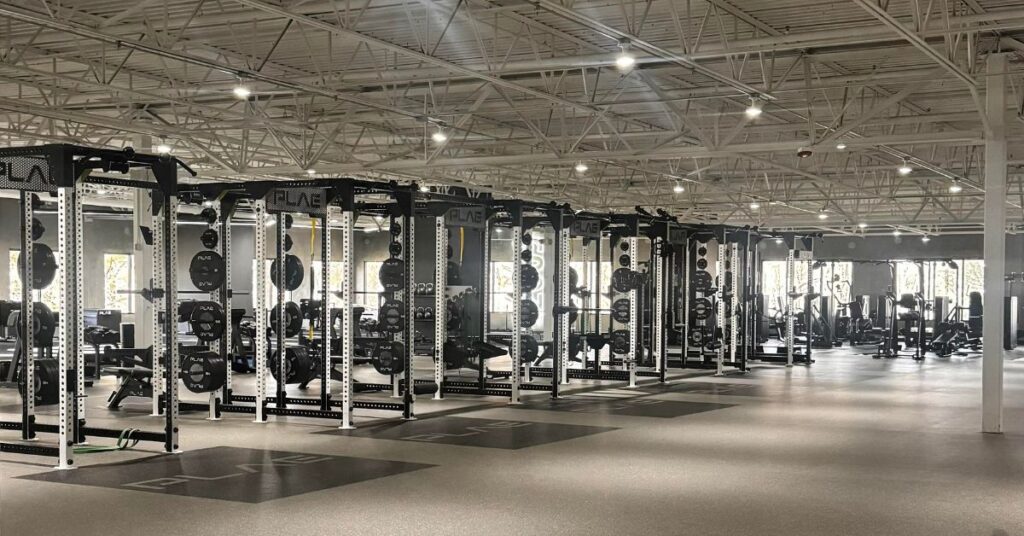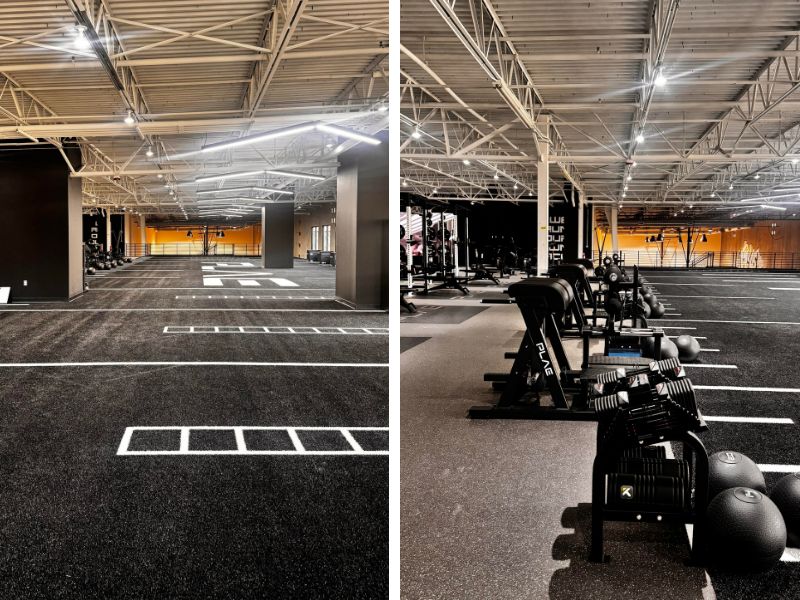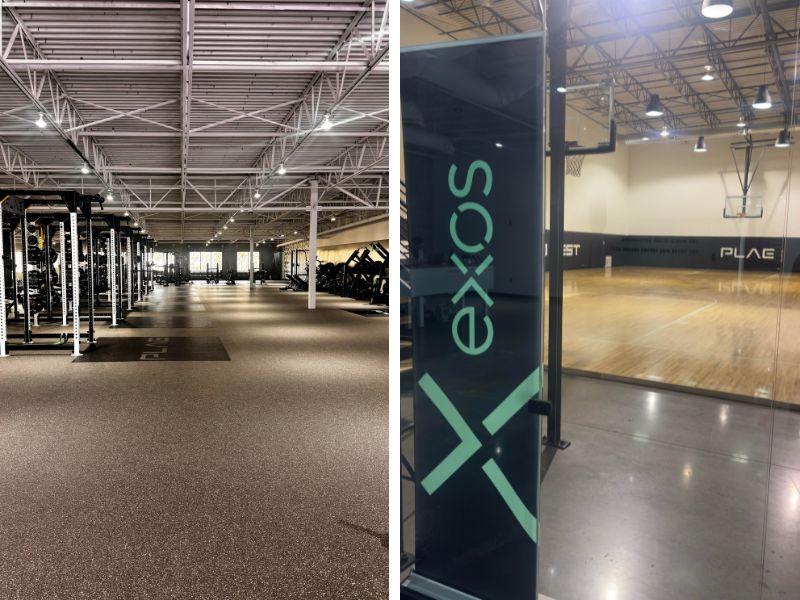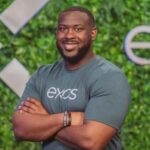
Coach Jordan Bush is the Performance Specialist for EXOS at PLAE in Canton, Georgia, and is known mostly for his work with NFL athletes Ja’Marr Chase, Patrick Queen, Micah Parsons, Kenny Moore, KJ Osborn, and D’Andre Swift, among many others. Coach “JB” works with a myriad of athletes to support their goals in the off-season by providing elite programming focused on joint mobility, flexibility, stability, and transferable training. He specializes in developing durable, explosive, and conditioned athletes, prioritizing their individual needs through a comprehensive training approach. Prior to joining EXOS, he honed his expertise at renowned facilities, including House of Athlete, IMG Academy, DI Training, and Kollective.
Freelap USA: As a private trainer who trains elite-level athletes, what does your intake process look like?
Jordan Bush: We all say this, but in my role, the most important ability as a coach is to build relationships and communicate. The first thing that I have to do is establish why this athlete has sought out my services and determine their goals. One of the most common mistakes coaches make is thinking they have an idea of what an athlete wants based on their assumptions of that athlete. This athlete wants to be a pro bowler, that athlete wants to win a ring, and all sorts of other goals—but in reality, this athlete is training to make a roster, that athlete wants to stay healthy throughout a 17-game season, and so on. So, first, I have to find out what they are trying to get out of my training.
One of the most common mistakes coaches make is thinking they have an idea of what an athlete wants based on their assumptions of that athlete, says @JBush____. Share on XFrom there, I try to establish the expectation that they will get my best every day: the same energy, the same level of detail, and the same approach tailored to their goals and needs, regardless of their status for the next season. Once we establish our goals and expectations, I look at their injury history—not in a broad sense, but I want to know what dings they are currently working through and what injuries they experienced last season.
EXOS has a thorough onboarding process, including an evaluation with a physical therapist to establish motor pattern weaknesses and ROM issues that might impair an athlete’s ability to train. That’s followed by a nutritional evaluation with a registered dietician to develop a plan for each athlete and a recovery evaluation to discuss sleep patterns and other factors that help our athletes recover from training sessions.
The last piece is to evaluate movement competencies and analyze the athlete’s performance. We use force plate testing, NordBord, timing gates, bar speed tracking, and other technologies to help us establish asymmetries and identify the needs of each athlete compared with their goals. This helps identify if the athlete needs more strength-focused work, isometrics, and mobility work or more fast twitch and reactive-focused programming. We conduct weekly evaluations to identify the athlete’s response to training, so as early as possible, I want to familiarize the athletes with these technologies and protocols.

Freelap USA: After you intake an athlete, what strategies do you use to address their personal weaknesses?
Jordan Bush: I pride myself on the educational component of what we’re doing, and I firmly believe that a large piece of our success has been the ability to convey the why to the athletes. If the athletes know why I am asking them to do “x,” they will likely take greater ownership of the task, and it helps them make the cognitive connection to the work. Connecting the educational component to athlete goals not only increases their focus on the task but also increases buy-in to the program I’m providing, as it further shows them that their program is tailored to their needs, goals, and abilities.
An example is an athlete who shows bilateral, lower-limb asymmetry in the force plate testing. With these athletes, we will work more unilateral plyos and strength work than I would with our athletes who don’t present those same asymmetries. If I can explain to our athletes that these asymmetries are an indicator of injury potential, they will likely take the exercise more seriously and also more greatly value their training experience with me. It’s about creating value for the athlete.
Similarly, if their team has a conditioning test when they report for camp, we address those needs because the last thing I want is for an athlete to report to camp after working with me and be labeled as “out of shape.” We work to create the most durable, explosive, and conditioned athletes built to withstand the demands of a physical NFL season that includes the pre-season and also the playoffs.
The NFL season is a grind, so regardless of how many off-seasons we’ve trained together, we always focus on shoulder, toe, ankle, and hip mobility early. These structures and the surrounding tissues take a beating during the season, so we make sure we address that by emphasizing the mobility and stability of these joints throughout all of our training, but especially in the beginning. These athletes know they are the best in the world when it comes to playing their sport, and they often understand that they are being paid to play football, not lift weights. So, I do my best to provide them with what they need while being flexible to adjust the program to how they feel each day.
Freelap USA: What strategies would you suggest to improve the relationship between the high school S&C coaches and the private trainers their athletes attend?
Jordan Bush: First, all parties need to set their egos aside and understand that none of us is really responsible for the success of that athlete. That athlete would likely have been elite regardless of what program or coach they went to. From there, provide the private coach with a copy of the program so they can identify what buckets are being filled and what aren’t. That’s not to say that the high school coach isn’t competent, but there are often time constraints that make it impossible to truly address all the needs of each athlete. The more communication between the two coaches, the more trust can be built, and a better product can be delivered to the athlete.
If you can tell me your program’s weaknesses, I know I can trust you more because no program—including mine—can address every need an athlete has. By communicating those with me, you’re telling me you value my time and putting the athlete’s needs ahead of your own. Then, I have to express that my goal is to provide their program with an athlete who is prepared to meet the needs their high school coach will require for them.
If you can tell me your program’s weaknesses, I know I can trust you more because no program—including mine—can address every need an athlete has, says @JBush____. Share on XI may have an idea of what the athlete should be able to do based on their position, but the needs of the program dictate what the athlete is required to do. If we can collaborate and establish these needs, we will provide a better product for the athlete and an athlete more capable of performing in your program.
Freelap USA: When working with a client who also trains with their team, how do you build a program that fills the gaps they may not be getting in their team training?
Jordan Bush: The biggest gap I see most often is with mobility and a lack of soft tissue injury awareness. Many coaches—again, because of time constraints and the number of athletes in a session—don’t have the ability to adequately address the athlete’s mobility needs. We often use yoga and Pilates-based exercises to address some of these needs, but adding a movement component also allows us to address the joint’s stability throughout the entire active ROM the sport will require. We build this intentionally into each session because it directly contributes to an athlete’s health and performance no matter what they get in the team setting, and it will only further bolster their performance with the team.
Circling back to the injury assessment, if a guy hasn’t benched his entire senior year of college because of a shoulder injury but plans to bench at the combine, we have to establish ways to meet his needs to help him perform that test. Addressing the almost guaranteed stability issues in the shoulder will help us build the foundation for our ability to train his bench press.
Understanding that these athletes who are training with their team are likely getting their strength buckets filled and, in many cases, their conditioning buckets filled as well, I can use a large amount of our time tailoring the session to address these stability issues at the joint level.

Freelap USA: What is one piece of advice you would give your 20-year-old self?
Jordan Bush: Just keep swimming. Jump in head-first and network as much as possible. Take advantage of every opportunity you get, whether it’s shadowing someone in the field, internships, or volunteering. Every opportunity counts! Don’t be afraid to put yourself out there, regardless of how difficult it may be. Never allow yourself to get complacent; stay hungry and always have a growth mindset.
The moment I think I have it all figured out, that’s when someone else is getting better than me. There are always opportunities to improve relationships, programming, and coaching. Embracing discomfort and stepping out of your comfort zone presents valuable opportunities for growth and development that will ultimately play a huge part in your success.
I strive to continually improve in every situation, recognizing the outcome is sometimes uncertain. Seek guidance from other professionals in this industry. Make connections and network: you never know what opportunities may arise down the road because you impressed someone at that moment.
If you stay ready, you don’t have to get ready.
Since you’re here…
…we have a small favor to ask. More people are reading SimpliFaster than ever, and each week we bring you compelling content from coaches, sport scientists, and physiotherapists who are devoted to building better athletes. Please take a moment to share the articles on social media, engage the authors with questions and comments below, and link to articles when appropriate if you have a blog or participate on forums of related topics. — SF

